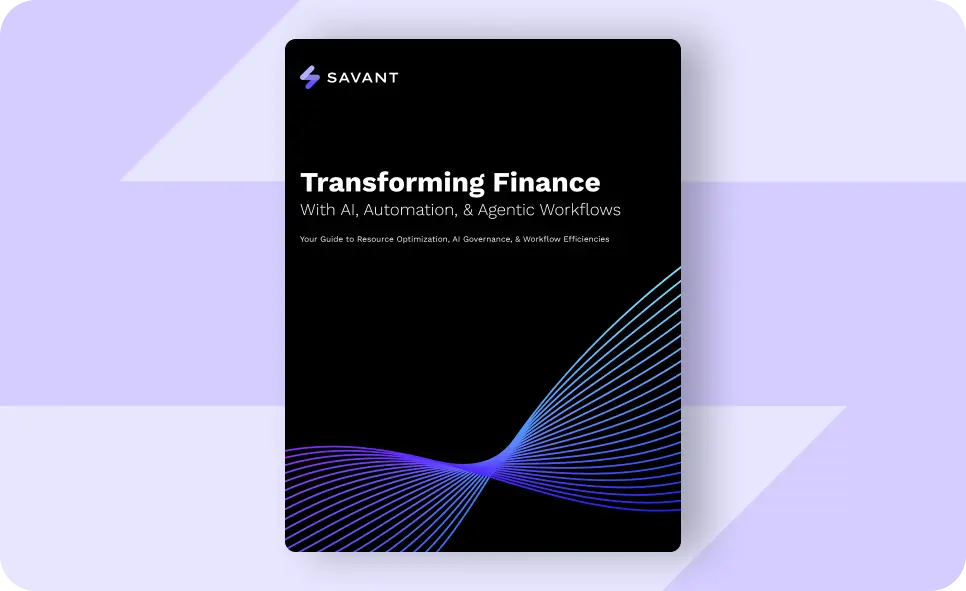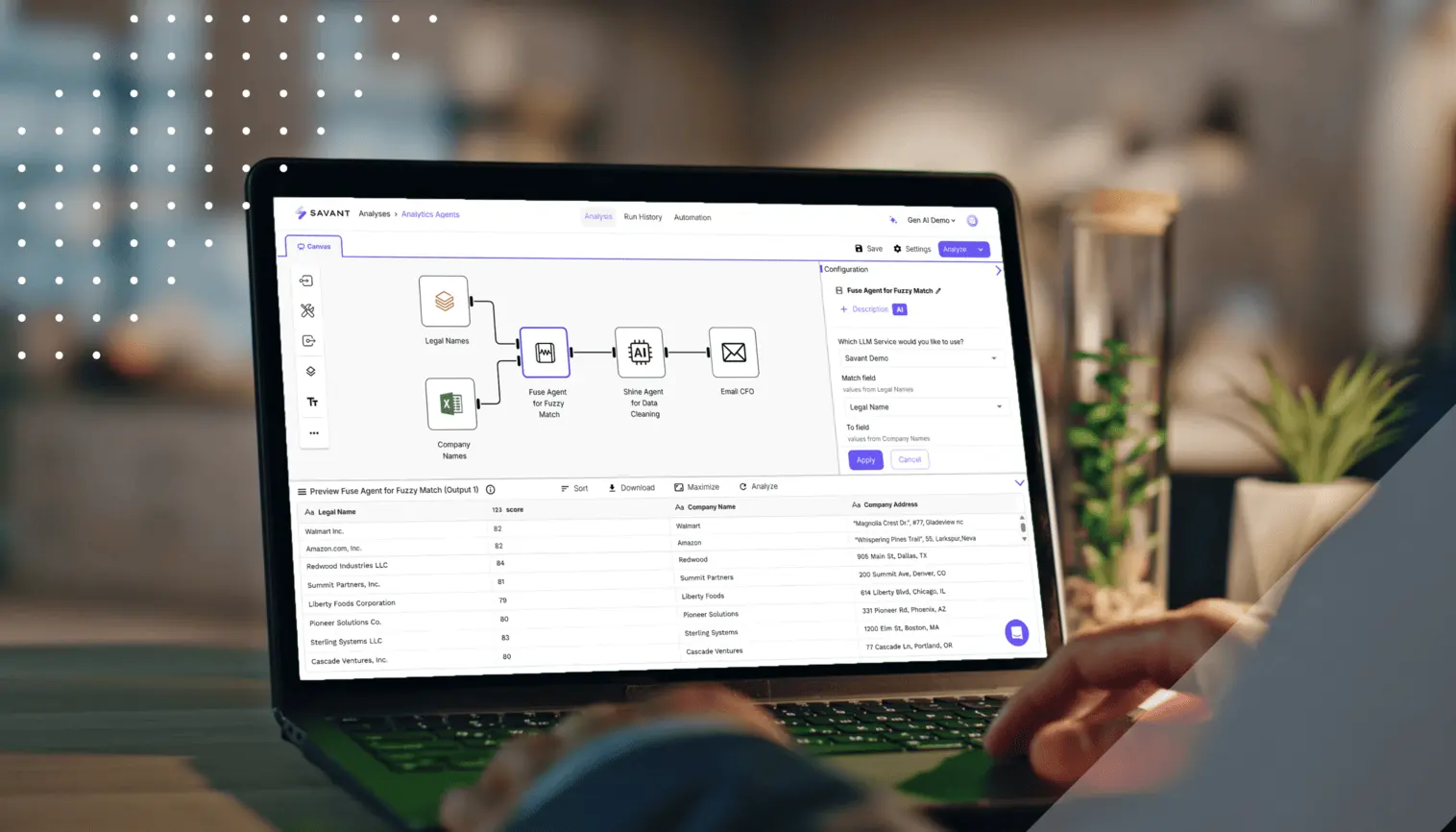How Savant Simplifies SOX Compliance for High-Growth and Highly Regulated Organizations

Joseph Jacob
September 26, 2025 9 Min Read


See Savant AI Agents turn unstructured data into usable insights — live.
Register
AI and Automation Are Reshaping Finance, Tax, and Accounting — See How.
Download Now
Unstructured data slows finance and analytics. Watch the fix in our Fall Release webinar.
Save Your Spot

For publicly traded, high-growth, and highly regulated companies, SOX compliance is not a ‘nice-to-have’ checkbox, but a core responsibility. Whether you’re preparing for an IPO, scaling rapidly, or operating in industries like financial services, healthcare, or energy, compliance failures can lead to fines, reputational damage, and loss of investor confidence.
To stay compliant, organizations must demonstrate robust controls across user access, change management, segregation of duties, data integrity, monitoring, and vendor management, all while staying agile and driving growth.
Many teams try to manage these requirements with legacy software, but those tools weren’t designed for modern compliance. They lack proper governance, force manual workarounds, and create fragmented audit trails. The result: higher costs, slower audits, and greater risk exposure.
Savant takes a different path. Governance, evidence collection, and enforcement are embedded directly in our modern analytics automation platform. SOX controls operate as part of day-to-day work, so teams get both speed and control.
Legacy analytics platforms were never built with compliance in mind. Whatever features they do have in the way of compliance were likely tacked on, not built in from the outset. As companies grow or face stricter regulations, such tools quickly become a liability. Here’s why they struggle:
There’s no central way to enforce policies, approvals, or segregation of duties. Teams rely on emails, spreadsheets, and manual sign-offs, which creates gaps and audit risk. In practice, that means segregation of duty conflicts slip through, approvals aren’t consistently captured with approver identity and timestamps, and “temporary” access or exceptions linger. As headcount grows, policy drift accelerates and control design varies team to team, making audits inconsistent and remediation recurring.
Logs, reports, and approvals live in different systems, making it hard to prove compliance or trace activity end to end. Evidence ends up as screenshots, CSV exports, and ticket links spread across ETL tools, databases, chat threads, and other systems — easy to lose and hard to validate. Auditors spend more time hunting than testing, while you struggle to establish chain of custody or reconstruct who changed what, when, and under which approval.
Change management, access reviews, and reconciliations require repetitive, manual steps that slow teams down and introduce human error. Copy-paste, spreadsheet macros, version juggling, etc., lead to sampling mistakes, missed de-provisioning, and untracked exceptions. When key people are absent, steps get skipped, timelines slip, and institutional knowledge walks out the door.
Because compliance data isn’t integrated, auditors and executives lack real-time insight into control health. You can’t easily answer basic operational questions like “What changed yesterday?” or “Which controls are failing right now?” Alerts are either noisy or nonexistent, lineage is opaque, and blind spots around data drift or segregation of duty conflicts persist until month-end, or worse, audit fieldwork.
Meeting compliance requirements often means adding consultants, extra headcount, and expensive point solutions. Tool sprawl raises license and training costs, while context switching slows teams and extends audit cycles. Last-minute evidence gathering, piecemeal remediation, and repeated walkthroughs inflate the total cost of compliance and push project work to the back burner.
The bottom line is, legacy software leaves governance and enforcement to chance. Organizations end up paying for complexity instead of control. Without a single system to enforce policies and emit evidence as work happens, compliance relies on people and patched-together processes, driving variability, audit friction, and escalating spend.
Savant is designed to integrate governance into everyday workflows. Instead of bolting on compliance after the fact, Savant automatically generates evidence and enforces controls as work happens. Controls become the default state, evidence is generated continuously, and the cost curve bends down as you scale.
| SOX CONTROL AREA | SAVANT CAPABILITY | EVIDENCE PRODUCED | BUSINESS BENEFIT |
| User Access Controls | Centralized RBAC with SSO and MFA | User/role exports, login logs | Least-privilege access, streamlined UAR reviews |
| Change Management Controls | Workflow versioning and approvals | Version diffs, change reports | Traceability, prevention of unauthorized changes |
| Segregation of Duties | Maker-checker publishing | Approval logs, history | Compliance enforcement, clean audit trails |
| Monitoring of Controls | Run tracking and alerting | Logs, reports, automated alerts | Continuous monitoring, faster issue resolution |
| Data Integrity and Completeness | Lineage and drift alerts | Lineage reports, drift logs | End-to-end traceability |
| Governance and Enforcement | Policy enforcement via COE | Immutable logs, approval records | Consistent governance across teams |
With these capabilities, compliance shifts from reactive, point-in-time checks to a real-time, automated system of control.
Savant bakes SOX controls into everyday work so access is right-sized, changes are reviewed, data stays trustworthy, operations are visible, and vendor proof is always handy.
Ensure only authorized users have access to sensitive data and workflows.
Outcome: Access reviews move from ad-hoc spreadsheets to repeatable packages that managers can certify quickly. Orphaned and over-privileged accounts are easier to spot, exception rates drop, and auditors can validate access changes in minutes using complete, time-stamped logs instead of piecing together email threads.
Prevent unauthorized or untested workflows from reaching production.
Outcome: Every change is explainable — what changed, who approved it, when it went live, and what it touched. That traceability lowers audit findings, reduces rework from unreviewed edits, and gives operations a clean rollback path when a release needs to be reverted.
Validate the accuracy and completeness of data before it impacts reporting or decisions.
Outcome: Data issues are caught at the control point, not in month-end close or during audit fieldwork. Finance and compliance teams gain confidence in reported figures, exception handling becomes predictable, and security posture aligns with the integrity requirements auditors test.
Stay ahead of issues with centralized monitoring and logging.
Outcome: Operations can prove control effectiveness continuously, not just during testing windows. Mean time to detect and resolve issues falls, auditors get immutable evidence on demand, and leadership sees real-time control health without digging through multiple systems.
Ensure third-party vendors meet compliance and security requirements.
Outcome: Due diligence cycles shorten and become more consistent, evidence requests are satisfied with a single source of truth, and remediation tracking is visible to both security and compliance, streamlining external audits and renewals.
For high-growth and highly regulated companies, compliance shouldn’t feel like a tax on momentum. Savant turns control objectives into everyday operating practice, so audits move faster, costs stay predictable, and teams keep shipping.
Embedding governance into every workflow produces faster, cleaner audits and lowers the total cost of compliance.
Whether you’re preparing for an IPO, scaling rapidly, or operating under strict regulations, SOX compliance doesn’t have to be a burden. Savant provides governance that’s built in — not bolted on — so controls are enforced automatically, evidence is always ready, and teams stay focused on innovation rather than administration.
Move beyond legacy software and adopt a cloud-native platform built for both speed and compliance.





